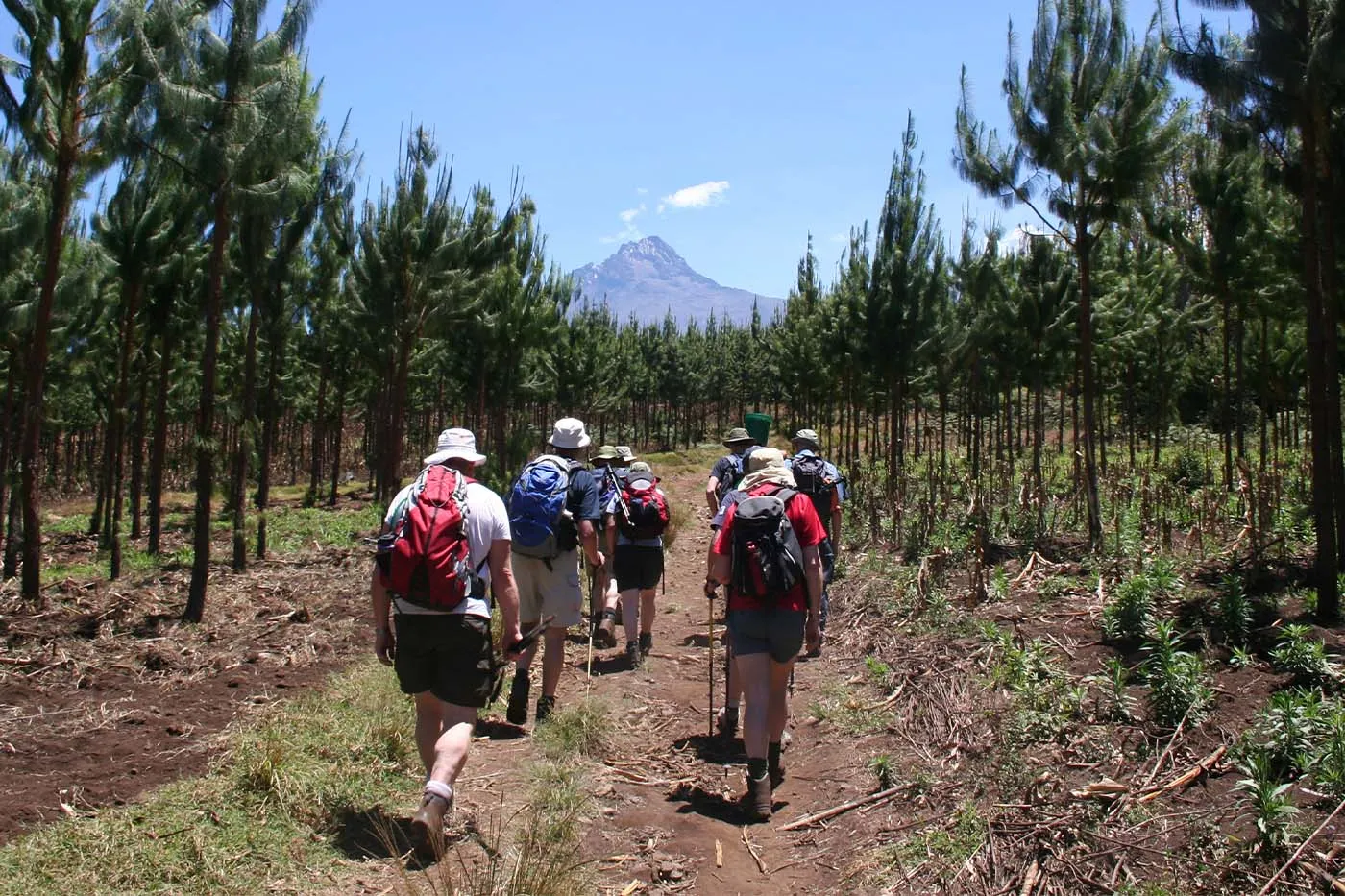6 Day Rongai Route – Kilimanjaro Climb Package
The 6 day Rongai Route is a quieter and less crowded way to climb Mount Kilimanjaro, approaching the summit from the north near the Kenyan border. This route is perfect for trekkers who want a more remote and gradual ascent, with scenic views of the foothills and wildlife along the way. Unlike the popular Marangu or Machame routes, Rongai offers a gentle climb with fewer hikers, making it ideal for those seeking solitude and a more natural wilderness experience.
The 6-day itinerary allows extra time for acclimatization, increasing the chances of summit success while giving trekkers a comfortable pace. The route ascends through forest, moorland, and alpine desert before the final summit push to Uhuru Peak.

At a Glance
Duration: 6 Days on the mountain
Route Type: Camping accommodation
Start Point: Rongai Gate
End Point: Marangu Gate
Difficulty: Moderate
Scenery: Forests, moorland, alpine desert, and glacier views
Best For: Trekkers seeking a quieter route, better acclimatization, and moderate challenge
Detailed Itinerary – 6 Day Rongai Route
Day 1: Rongai Gate to Simba Camp
Your trek begins at Rongai Gate at 1,950 meters. Hike through lush rainforest, crossing small streams and spotting wildlife like colobus monkeys and bushbucks. After 4–5 hours, reach Simba Camp at 2,700 meters, surrounded by beautiful views of the Kenyan plains.
Day 2: Simba Camp to Kikelewa Camp
Today you leave the forest behind and enter the moorland zone. The trail climbs steadily with stunning views of Mawenzi and Kibo peaks. After about 6 hours, arrive at Kikelewa Camp situated on a rocky plateau at 3,600 meters.
Day 3: Kikelewa Cave to Mawenzi Tarn
The trail continues through moorland and alpine desert with stunning views of Kilimanjaro’s glaciers. Trek to Mawenzi Tarn Camp at 4,300m, a serene high-altitude campsite near the base of Mawenzi peak.
Day 4: Mawenzi Tarn to Kibo Hut
Today’s trek leads you to Kibo Hut at 4,700m, the final camp before summit day. The landscape is stark and dramatic with spectacular panoramic views. Rest well and prepare for the challenging summit attempt starting after midnight.
Day 5: Summit Day – Kibo Hut to Uhuru Peak, then descend to Horombo Hut
Begin your summit climb just after midnight. Ascend steeply through the night to Gilman’s Point (5,685m) and then to Uhuru Peak (5,895m), the highest point in Africa. After summiting, descend to Horombo Hut (3,720m) for an overnight rest.
Day 6: Horombo Hut to Marangu Gate
Descend through moorland and rainforest to Marangu Gate (1,870m), where you will sign out and receive your summit certificate. Your driver will be waiting to transfer you back to your hotel or Arusha.
What's Included
Kilimanjaro National Park entry fees
Camping accommodation and all camping equipment
Professional mountain guides, porters, and cook
All meals on the mountain
Drinking water and hot drinks
Rescue fees
Oxygen cylinder and first-aid kit
Pre- and post-trek briefing
Transportation to Rongai Gate and from Marangu Gate
Summit certificate (gold for Uhuru, green for Gilman’s Point)
What's Not Included
Flights and visas
Travel insurance
Tips for guides and porters
Personal trekking gear (sleeping bags, boots, etc.)
Accommodation before and after the trek (can be added on request)
Extra snacks and beverages
Portable toilets (available at extra cost)
